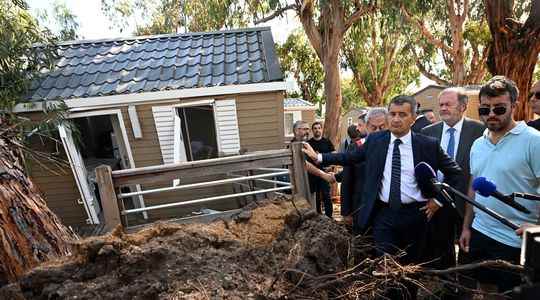It already has a name: the Central Office for combating attacks on the environment and public health (Oclaesp) could gain weight in the weeks to come. It has a vocation in the mind of the Minister of the Interior to become a kind of great “green police”. “The objective is that, in each gendarmerie brigade, there are gendarmes trained in attacks on ecology. It will be a revolution”, specified Gérald Darmanin to Sunday newspaper. To support his ambition, the minister wants to create “3,000 positions” within the institution.
- What is Oclaesp?
Installed in 2004, Oclaesp is a central office attached to the gendarmerie and not to the police. It supports the police by responding to specific missions: fight against forest fires, pollution, wild dumps, waste trafficking, and protected species.
Oclaesp’s mission is not limited to the environment. It fights both against the trade in glass eels for ivory and against the illegal practice of medicine, doping or bioterrorism. The institution is also in charge of investigating medical devices and drugs. Investigators had, in this context, searched the homes of Edouard Philippe, Olivier Véran and Agnès Buzyn, in October 2020 following the opening of a judicial investigation by the Court of Justice of the Republic into the management of the health crisis.
Oclaesp should not be confused with the National Forestry Office (ONF), which is responsible for managing forests under the supervision of the Ministry of Agriculture and Food. The latter is not intended to investigate and prosecute the perpetrators of vandalism or pyromania in the woods.
- Do green police already exist?
Since 1993, the gendarmerie has had “environment/ecology relay trainers”. These agents were recognizable in the units by their case of samples for watercourse pollution. They were the first to be called “green policemen”. The gendarmerie, like the police, are now in a position to launch investigations against the perpetrators of environmental degradation. They are first motivated by reports from agents of the departmental unit for research into the causes and circumstances of forest fires (RCCI).
“Like at a crime scene”, the agents “mark out” then “rake” the place, looking for “any element that could shed light on the origin of the fire”, explains Pascal Sperandio, to AFP, himself. same member of the RCCI of the gendarmerie of Nîmes. The agents of the RCCI are trying to determine the exact precision of the start of the fire, in particular by probing the residents and following the trail of cigarette butts. Once the RCCI report has been delivered to the public prosecutor, it is up to the gendarmerie or the police to investigate the identity of the arsonist.
- How many arrests in 2022?
With the announced objective that each agent be trained in environmental damage, Gérald Darmanin intends to increase the number of arrests of arsonists suspected of starting fires. 90% of fires are of human origin. The multiplication of departures in the same region indicates, most of the time, intentionality. To date, 26 people have been arrested since the beginning of the year.
